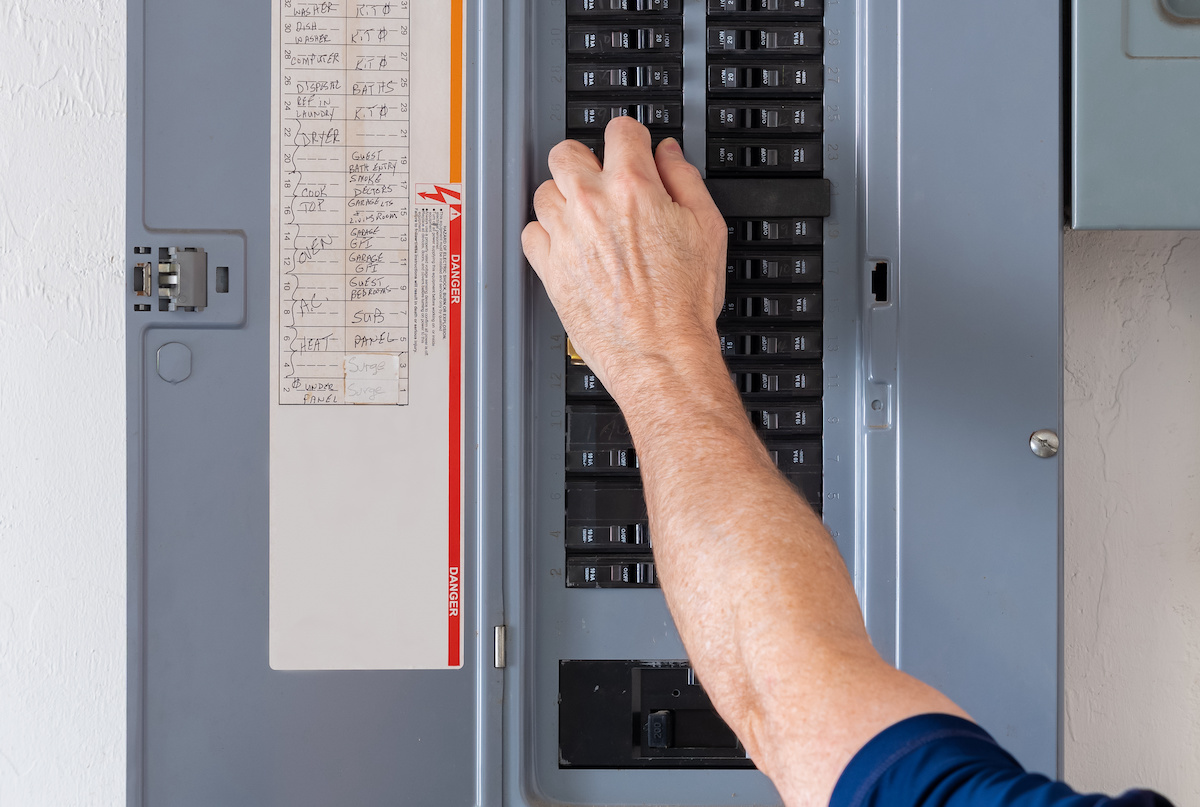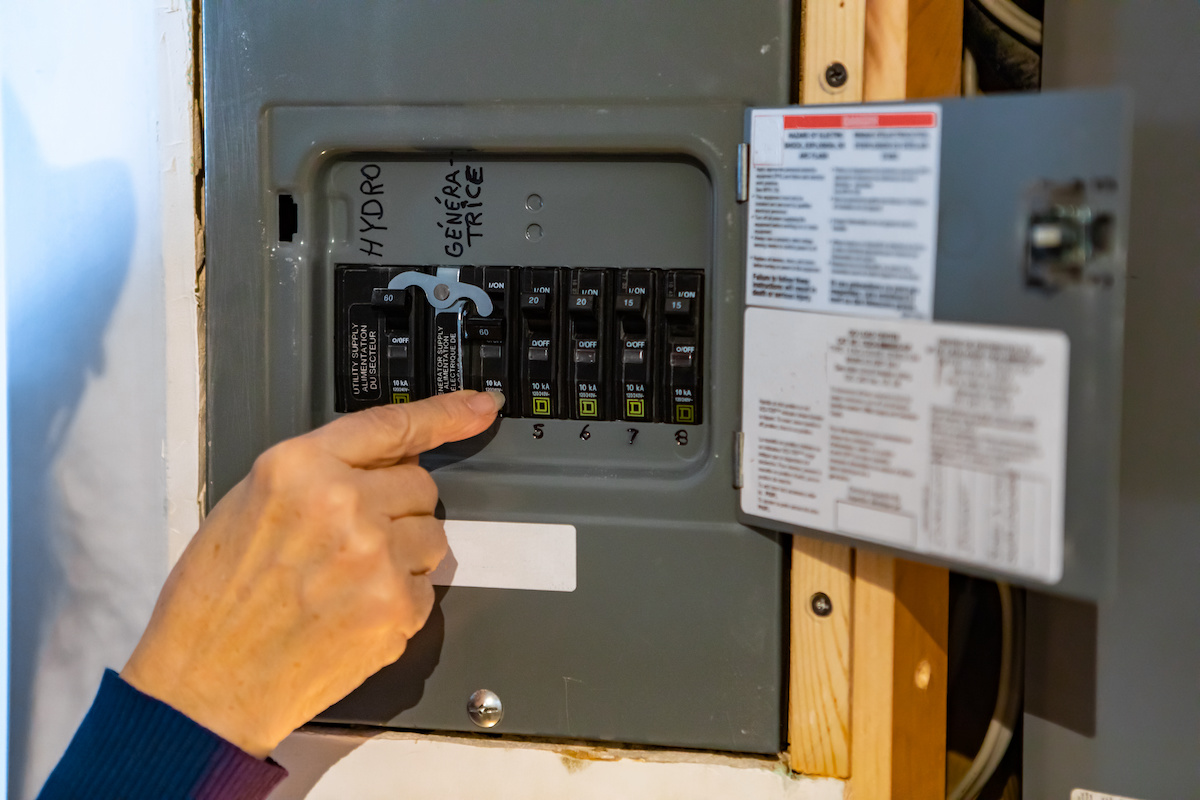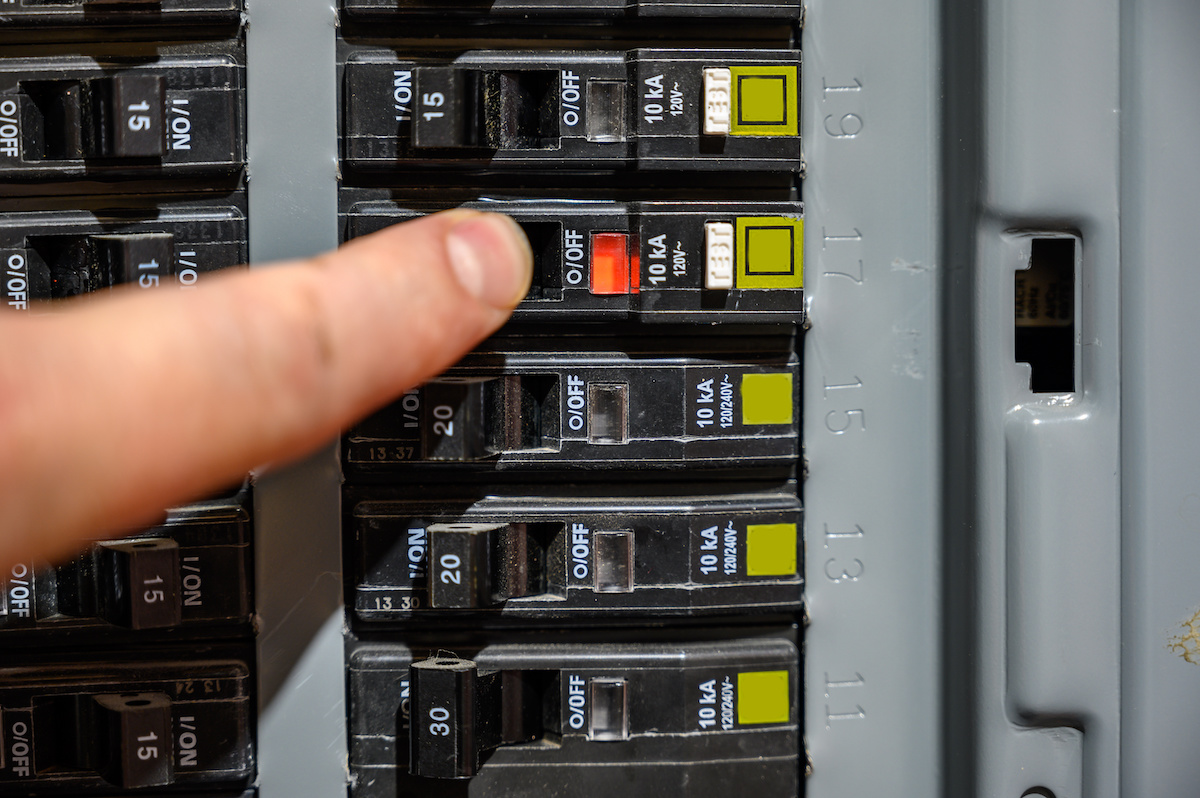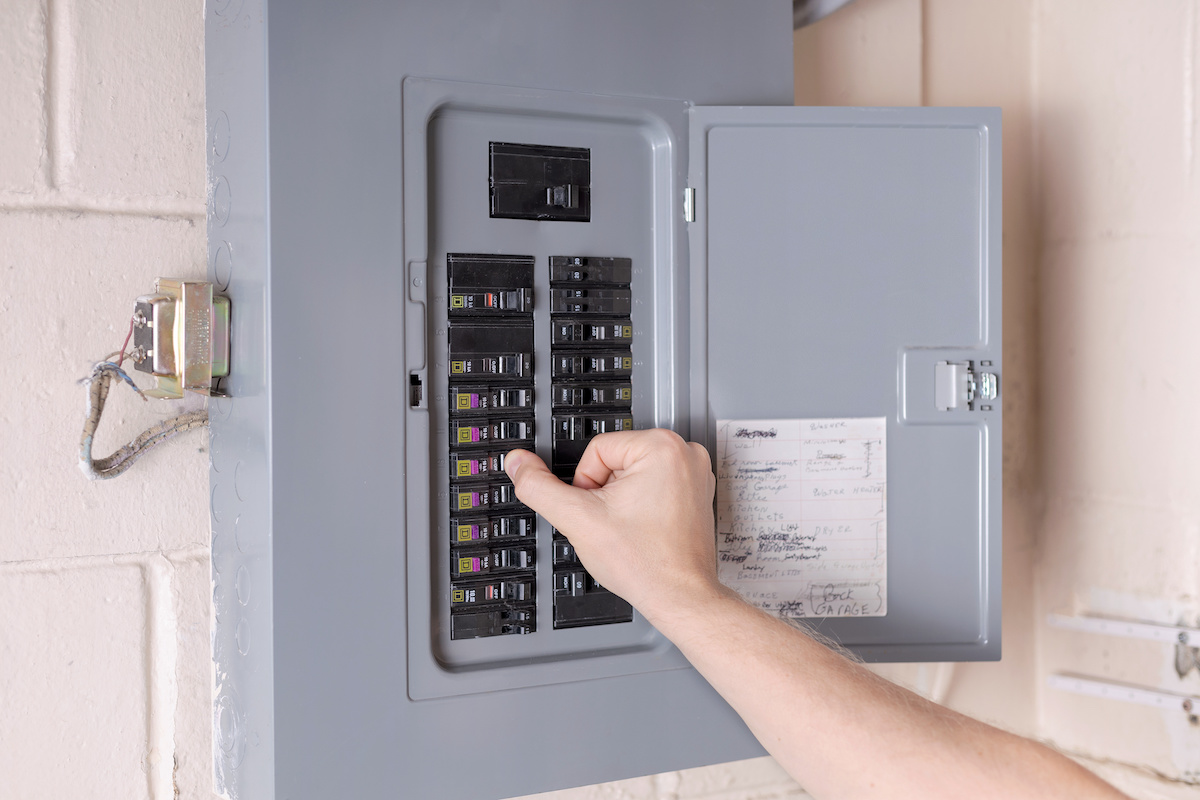
16 Feb Breaker Boxes 101: Basics Every Houston Homeowner Should Know
If you’ve ever wondered about that metal box on the wall of your garage, basement, or utility room that seems to be the heart of your home’s electrical system, you’re in the right spot. Let’s get right into the world of breaker boxes—or as some people call them, electrical panels.
As a local Houston electrician, BrotherlyLove Electric has spent over 10 years tinkering with and fixing these boxes, in homes all around the Houston area. Today, we’re going to share the ins and outs, the dos and don’ts, and some tips to keep your home’s electrical systems running smoothly.
First, let’s clear up the confusion between breaker boxes, circuit breakers, and fuse boxes. While these terms are sometimes incorrectly used interchangeably, they refer to distinct components of a home’s electrical system.
What’s a Breaker Box?
The breaker box, also known as an electrical panel, is the central hub of a home’s electrical system. It’s where the main power line from the electric utility company connects to individual circuits that distribute electricity throughout the house.
Inside this box, you’ll find circuit breakers, each responsible for controlling power to a specific area or appliance within your home. In simple terms, your breaker box is the main switchboard for all the electrical circuits in your home.
Think of it as the manager of your electrical supply, distributing electricity to different parts of your house through individual circuits. Each circuit is protected by a breaker that trips (or turns off) when there’s an overload or a short circuit, helping to prevent electrical emergencies that can cause potential damage or fires.
What’s a Fuse Box, Then?
A fuse box is an older type of electrical panel that serves a similar purpose to the breaker box but works differently. Instead of circuit breakers, a fuse box uses fuses. Each fuse contains a piece of metal that melts when too much current flows through it, interrupting the circuit and stopping the flow of electricity. Once a fuse blows, it must be replaced with a new one of the correct size and rating, unlike circuit breakers, which simply need to be reset.
Key Differences
- Mechanism – Breaker boxes use resettable circuit breakers to protect against overloads. Fuse boxes use one-time fuses that must be replaced after they blow.
- Convenience – Circuit breakers offer more convenience since they can be easily reset after tripping. Fuses, however, need to be replaced, requiring you to keep spares on hand and understand the correct ratings for replacement.
- Safety/Compliance – Modern electrical codes generally favor breaker boxes due to their ease of use, safety features, and the ability to handle higher demands of contemporary electrical loads. Homes with fuse boxes might be considered outdated and could require an upgrade for safety, efficiency, and compliance with current electrical standards.
While fuse boxes are less common in newer homes, they’re still found in many older properties. Regardless of which system you have, ensuring it’s properly maintained and meets current safety standards is key to keeping your home safe and powered efficiently.
Understanding Breaker Boxes
Types
Most homes in our area have one of two types of panels: the main breaker panel and the sub-panel.
The main panel houses the primary electricity shutoff—it’s where the total power to your home can be cut off. Sub-panels are smaller and might be used to control specific areas like a renovated garage or a backyard shed.
Sizes/Amps
As far as physical size, there are options ranging from smaller boxes that fit around 8 to 12 breakers, to huge panels that can accommodate over 40 breakers.

This very small breaker box is from a Canadian home, hence the French labeling.
The “size” of a breaker box in terms of amperage essentially tells you how much electrical juice it can safely distribute to your home. Common sizes for residential electrical panels are 100, 150, or 200 amps, but there are even 400 amp breaker boxes. A smaller home with fewer high-demand appliances might be well-served by a 100-amp panel, while larger homes with modern appliances, heating and cooling systems, and maybe even an electric vehicle charging station might need 200 amps or more to keep everything running smoothly.
Circuit Breakers
A circuit breaker is a switch located inside the breaker box. Its job is to monitor and regulate the flow of electricity to a particular circuit. If the circuit draws too much power—perhaps due to an overload, a short circuit, or another issue—the breaker “trips,” automatically cutting off electricity to prevent damage or fire. Circuit breakers are designed to be reset manually after tripping, making them a convenient and reusable safety mechanism. Each switch in your breaker box is connected to a specific area or appliance in your home.
Tip: It’s a good idea to label these switches if they’re not already. That way, if you need to cut power to your kitchen backsplash, for example, without turning off the refrigerator and/or plunging the whole house into darkness, you will know exactly which switch to flip.
Single-pole breakers are the most common type you’ll find in a residential breaker box. They usually have a switch and are rated for 120 volts. Each one controls a single circuit in your home. Think of them as the standard breakers for your lights, outlets, and most appliances. They can handle circuits that require either 15 or 20 amps of power, which covers a lot of your everyday electrical needs.
Double-pole breakers are the ones that look like two single breakers connected together (because they actually are). They’re rated for 240 volts and are used for larger appliances that need more power, such as your air conditioning system, electric range, or dryer. Both sides trip together if a fault is detected on either of the circuits they control. This means they can manage much more current, supporting appliances and other needs that single-pole breakers can’t handle.

Every circuit breaker has a specific amperage of current it can handle. They are designed to manage the full current up to its rated capacity without tripping under normal conditions. So, a 20-amp breaker is meant to be able to “handle” up to 20 amps of current continuously—in a perfect world.
However, breakers are designed with safety margins and may trip if the current approaches its maximum rating for an extended period, as this can be a sign of an overloaded circuit at risk of overheating. Just like us, breakers need a bit of breathing room to avoid getting overwhelmed. They’re built to deal with the full load, but constantly pushing them to their max isn’t the best idea. The National Electrical Code (NEC) suggests a rule of thumb known as the 80% rule for continuous loads. This rule advises that the continuous load on a circuit should not exceed 80% of the breaker’s rated capacity.
This means for a 20-amp breaker, the continuous load should not be more than 16 amps.
This guideline helps prevent circuit overload, reduces the risk of tripping the breaker, and ensures a safety buffer to accommodate spikes in electrical demand.
So while a circuit breaker should be able to technically manage current up to its full rated capacity, it’s highly recommended to limit the continuous load to 80% of that rating to ensure safe and reliable operation of your electrical system.
Special Types of Breakers
Main Breaker (Service Disconnect Switch)
Alright, let’s talk about the big kahuna in your breaker box. The main breaker, also known as the service disconnect switch, serves as the gatekeeper for your home’s entire electrical system. It’s essentially the master switch that controls the flow of electricity from CenterPoint Energy or another electric utility company into your home.
Rated for a specific amperage that matches your home’s electrical service capacity, typically 100 to 200 amps, the main breaker plays a crucial safety role. In case of an overload or a severe electrical fault, flipping this switch immediately cuts off the electrical supply, helping to prevent damage or fire.
Definitions:
- Overload: An overload occurs when electrical circuits carry more current than they are designed to handle. This excessive flow of electricity can cause overheating, potentially damaging wiring and devices connected to the circuit. Overloads are typically caused by connecting too many devices to a circuit, exceeding its capacity.
- Electrical Fault: An electrical fault is a general term for any abnormal flow of electricity that can lead to undesired electrical system performance. This includes short circuits (where electricity flows along an unintended path, often where resistance is very low), ground faults (where electricity flows directly to the earth or ground), and open circuits (where the path for electricity is interrupted). Faults can result in dangerous conditions, including the risk of fire, shock, or damage to electrical components.
In a nutshell, think of your main breaker as the “big red button” for your home’s electrical system. It’s your home’s primary defense against overloads, providing a straightforward way to control the power supply and protect your electrical system. It also allows for safe maintenance and repairs by ensuring that no current flows through the home’s circuits while work is being done, whether it’s an electrician fixing an emergency issue or performing electrical upgrades to the house.
GFCIs: The Lifeguards
Imagine you’re blow-drying your hair near a sink full of water, and whoops—the hairdryer takes a dive. Here’s where your buddy, the Ground Fault Circuit Interrupter (GFCI), jumps into action. GFCIs are all about preventing shocks. They keep a hawk’s eye on the electricity flowing in and out of a circuit. If they spot something fishy—like electricity trying to make a sneaky escape through a path it shouldn’t (say, through you)—they shut down the power faster than you can say “Houston, we have a problem.”
You’ll find these heroes in places where water and electricity might mix, like bathrooms, kitchens, and outdoor areas. They’re not just good to have; they’re required by law in these spots for your safety.
AFCIs: The Firefighters
Now, let’s talk about Arc Fault Circuit Interrupters (AFCIs). These are your first line of defense against electrical fires. Arc faults happen when electricity gets a bit too adventurous, jumping across gaps in wires or between different conductors. AFCIs keep an eye out for these shenanigans. When they detect an arc fault, they cut the power to the circuit, nipping potential electrical fires in the bud.
What are the Empty Slots in My Breaker Box for?
Expansion slots in your breaker box allow you to add more circuit breakers in the future. These empty slots are useful if you plan to increase your home’s electrical demands, such as adding new appliances, renovating, or extending your living space. Having some available means your electrical system is prepared for upgrades or additions, ensuring you can easily accommodate any new electrical needs that arise.
Maintenance Tips
A well-maintained electrical panel can last a good while, 30 to 40 years or even longer. But just like anything else in your home, its longevity can be influenced by how well it’s cared for and the demands placed on it. Keep an eye out for signs it might be time for a replacement, like frequent tripping or physical damage, to stay ahead of any potential issues. Regular check-ups can help it keep powering your home safely for years to come.
- Inspect Regularly: Once in a while, take a look at your breaker box for any signs of wear and tear. Look out for rust, loose wires, or breakers that seem out of place.
- Test Your Breakers: It’s a smart practice to test your breakers annually. Flip them on and off to ensure they’re working correctly. If a breaker doesn’t stay in the “on” position, it might be time to call in a professional.
- Keep It Clear: Make sure there’s easy access to your breaker box. You don’t want to be moving boxes or furniture in the dark during a power outage.
Common Issues and Solutions

- Tripped Breaker: This is the most common issue. If part of your house loses power, check your breaker box. A tripped breaker will be in the “off” position or somewhere in between. Flip it all the way off, then back on.
- Flickering Lights: This can be caused by a variety of issues, but it may point to a circuit overload. Consult an electrician and consider spreading out high-energy appliances to different circuits.
- Old or Outdated Panels: Older homes might have panels that are no longer up to code. If your home is over 20 years old and you’ve never had the panel inspected, it might be time for an upgrade.
When to Call a Houston Electrician
While many aspects of breaker box maintenance can be handled on your own, there are times when you’ll need to call in a pro:
- If you’re constantly resetting a breaker.
- If you notice any burning smells or see scorch marks around your panel.
- If you’re planning any major home renovations that involve electrical work.
Remember, safety first. Never attempt to repair your electrical panel yourself unless you’re trained to do so. Electricity is incredibly dangerous, and the risks far outweigh the benefits of DIY. Your breaker box is crucial to the safety and functionality of your home. With a bit of knowledge and regular maintenance, you can ensure it continues to serve its purpose efficiently. Remember, when in doubt, reach out to a certified electrician.
Have any questions about your electrical panel? Here in Houston, the team at BrotherlyLove Electric is ready to lend a hand from Katy to Conroe, from The Woodlands to Sugar Land. Give us a call at (346) 777-3370 or simply contact us online. Keep your home safe, and your lights on, neighbors!

